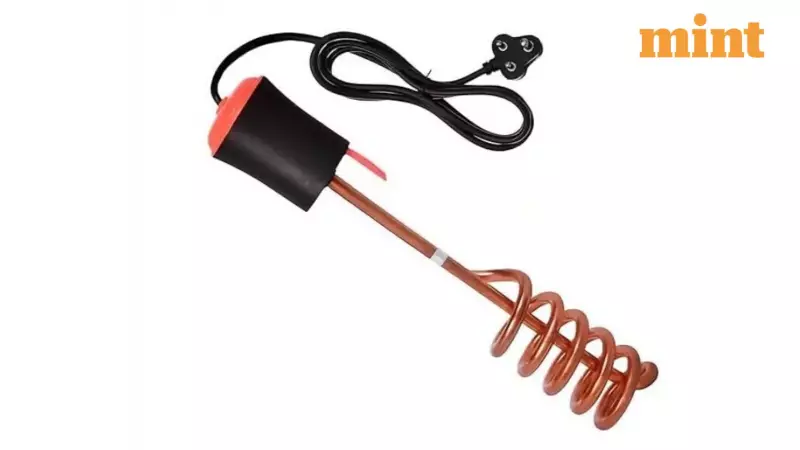
As the winter chill sets in across Indian households, the humble immersion rod emerges as a quick and affordable solution for hot water needs. Compact, easy to store, and faster than many traditional appliances, it has become an indispensable winter companion. However, its simplicity is deceptive. Misuse can lead to severe safety risks, skyrocketing electricity bills, or permanent damage to the device itself.
Many people operate these rods without a full understanding of their mechanics or the necessary precautions. Responsible usage is the key to enjoying warm water throughout the season, free from worries about electrical hazards or premature wear and tear. Most mistakes stem from carelessness or a simple lack of knowledge. Let's explore the most common errors and the correct ways to avoid them, ensuring both your safety and the longevity of your appliance.
Critical Errors and How to Correct Them
Placing the rod in an empty bucket is arguably the most dangerous blunder. Electricity and a dry heating element are a disastrous combination. An activated rod heats up instantly and can burn out within mere seconds if it is not fully submerged in water. Some users make the risky move of plugging the rod in first and then filling the bucket, which can cause the heating element to crack or produce dangerous electrical sparks. The correct method is to always fill the bucket with water first and then gently insert the rod, ensuring it remains submerged up to the marked level at all times.
Another widespread hazard is using metal buckets for heating. While steel buckets are durable, metal is an excellent conductor of electricity. A minor current leak can travel through the bucket and deliver a severe shock to the user. Even with insulation in modern rods, older or damaged models make this practice extremely unsafe. Always opt for a sturdy plastic bucket that does not conduct electricity, and ensure it is large enough to hold the rod without it touching the sides.
Habits That Compromise Your Safety
A common yet perilous habit is touching the water while the rod is still operating. Dipping a hand in to check the temperature is an invitation for an electric shock, especially if there is any insulation damage or moisture at the plug point. The safe procedure is to always switch off the rod, unplug it from the socket, and wait a few moments before testing the water. This also allows the rod to cool down, preventing accidental burns upon removal.
Leaving the rod unattended during heating is a recipe for trouble. People often switch it on and walk away to do other chores, which can lead to overheating, boiling over, or even melting the plastic bucket if the water level drops too low. Overheating damages the rod and can deform the bucket. It is crucial to stay nearby while the rod is in operation. If you must leave, set a timer on your phone to remind you to return and switch it off.
Ensuring Longevity and Peak Performance
The power demands of an immersion rod require a stable electrical connection. Using damaged or loose sockets significantly increases the risk of sparks, short circuits, or fire hazards, especially during frequent winter use. Frayed cables, bent pins, or cracked plugs should never be ignored. Make it a habit to inspect the rod, cable, and socket before every use to ensure everything is in perfect working order.
When winter ends, improper storage can ruin your immersion rod. Tossing it into a damp drawer or storage room exposes it to moisture, rust, and physical damage. After each use, wipe the rod dry and store it in a clean, dry place. Avoid coiling the cable tightly, as this can weaken the internal wires over time. Instead, wrap it loosely and keep it away from direct sunlight and damp corners.
Finally, in a bid to heat water faster, some users make the mistake of using containers that are too small. This is unsafe as the rod needs enough space to remain fully submerged without touching the container's walls. A small bucket can cause localized overheating and damage both the rod and the bucket. Always use a bucket of adequate size to ensure safe and efficient heating.
By consciously avoiding these common mistakes—such as unattended heating, using metal buckets, or plugging into faulty sockets—you can significantly reduce risks. Small, consistent precautions make a monumental difference, keeping your home safe and ensuring your immersion rod serves you reliably for many winters to come.





